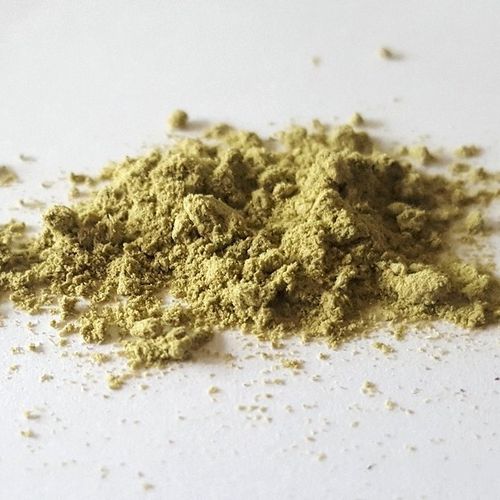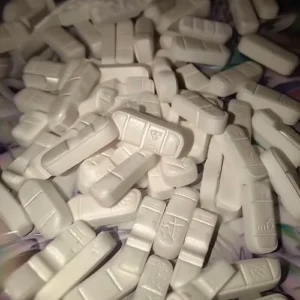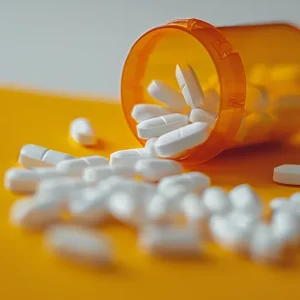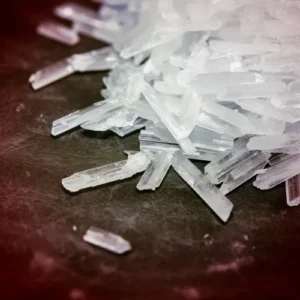Ephedrine is found in a number of cold remedies and asthma treatments. It is a stimulant drug that is extracted from an oriental plant called Ma Huang. It is also found as well as an ingredient in some herbal highs which are marketed under a number of street names including Cloud 9 and Nirvana Plus. Sometimes referred to as “herbal ecstasy” the drug is actually closer in its effects to amphetamine (speed).
Ephedrine is a stimulant increases the heart rate and blood pressure, speeds up the metabolism, expands bronchial tubes and raises body temperature. It is a commonly abused drug because of these effects and users quickly run the risk of becoming addicted to the drug.
In sport, ephedrine is listed on the World Anti-Doping Agency’s list of prohibited substances as it is seen a performance enhancing when taken in high quantities. In 2007, Sheffield United goalkeeper Paddy Kenny failed a drug test after testing positive for ephedrine.
What are the effects of ephedrine?
Ephedrine abuse occurs when the drug is taken in excessive amounts for recreation only. Long-term use of the drug can lead to dependence and addiction. Physical effects of using ephedrine include:
- Increased heart rate and raised blood pressure.
- Easier breathing as the bronchioles in the lungs are dilated
- Heighten feeling of alertness and focus
- Sensitive skin and shivers down the spine
The Dangers of Ephedrine Abuse
Ephedrine abuse and addiction is a growing problem in the UK. While ephedrine has some legitimate medical uses, recreational abuse of the drug can lead to serious health complications.
Some of the key dangers of ephedrine abuse include:
- Cardiovascular effects – Taking high doses of ephedrine can raise blood pressure and heart rate to dangerous levels, increasing the risk of stroke, heart attack and other cardiovascular events. These risks are higher for those with pre-existing heart conditions.
- Overdose – Overdosing on ephedrine can lead to symptoms like agitation, hallucinations, convulsions, coma and even death. The risk of overdose rises at higher doses.
- Addiction – Like other stimulants, ephedrine has a high potential for dependence and addiction with prolonged use. Withdrawal symptoms like depression, anxiety and fatigue may occur when use is stopped.
- Mental health effects – Abusing ephedrine long-term can result in side effects like paranoia, aggression, confusion and psychosis. It may worsen underlying mental health conditions.
- Physical side effects – Headaches, tremors, insomnia, nausea, vomiting and stomach pain are common with ephedrine abuse. Kidney damage is another potential complication.
- Risky behaviours – The disinhibiting effects of the drug may increase the likelihood of unsafe activities like unsafe sex or driving under the influence.
- Drug interactions – Ephedrine can interact with medications for mental health, heart conditions, diabetes and other drugs. These combinations may be life-threatening.
Recognising the signs of ephedrine addiction early and seeking professional treatment can help prevent the most serious consequences of abuse. A comprehensive treatment program can help people break the cycle of stimulant addiction.
How is Ephedrine Abuse Detected and Treated?
Detecting and treating ephedrine addiction requires a combination of observation, testing and medical care. Some key ways ephedrine abuse is identified and addressed include:
- Physical exam – A doctor can check for signs of stimulant use like elevated heart rate and blood pressure, agitation, pupil dilation and weight loss.
- Toxicology screening – Urine or blood tests can detect the presence of ephedrine and metabolites to confirm use. These tests are available as on-site dip panels or lab-based analyzers.
- Psychological evaluation – Assessing mental status, behavior and cognitive function can indicate stimulant intoxication or addiction. Co-occurring disorders may also be identified.
- Medical monitoring – Electrocardiograms, blood work and other tests allow doctors to monitor for cardiac, kidney and other organ damage from ephedrine abuse.
- Withdrawal treatment – Supportive medical care and medications can ease symptoms during the withdrawal process. This improves comfort and reduces complications.
- Addiction therapy – Behavioral therapies like cognitive-behavioral and contingency management therapy help modify addictive behaviours over the long-term.
- Support groups – Peer support groups like Narcotics Anonymous provide social support for maintaining sobriety from ephedrine and other drugs.
- Relapse prevention – Treatment continues after initial detox with maintenance programs and counseling to prevent return to ephedrine abuse.
Seeking help as soon as ephedrine addiction is suspected allows for earlier intervention and improves outcomes. A comprehensive treatment plan tailored to the individual’s medical and psychological needs offers the best chance for long-term recovery.
Legal status of ephedrine
- At present, the drug is not controlled under the Misuse of Drugs Act, therefore personal possession and use of the drugs in small amounts is not illegal.
- The Medicines Act prohibits the marketing of ephedrine as an unlicensed preparation
Slang names for Ephedrine
Street names for the drug include trucker speed and Mini-Thins
Ephedrine drug test kits
A presumptive drug testing kit is often used by professionals and police to identify the drug when found in possession or when checking premises for drugs of abuse.
Photo Credit: “Ephedra” (CC BY 2.0) by The Drug Users Bible
Zoom Testing is a leading UK drug testing company and a supplier of Drug Test Kits.





